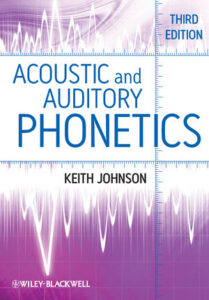in Dan Jurafsky and James H. Martin “Speech and language processing: an introduction to natural language processing, computational linguistics, and speech recognition”, 2009, Pearson Prentice Hall, Upper Saddle River, N.J., Second edition, ISBN 0135041961 Forum for discussing this reading
Jurafsky & Martin – Section 3.4 – Finite-State Transducers
FST are a powerful and general-purpose mechanism for mapping (“transducing”) an input string to an output string.
Jurafsky & Martin – Section 3.3 – Construction of a Finite-State Lexicon
A lexicon can be representing using different data structures (finite state network, tree, lookup table,…), depending on the application.
Jurafsky & Martin – Section 3.2 – Finite-State Morphological Parsing
Automatic morphological decomposition of written words is possible. However, this section does not consider the added complication of deriving a pronunciation.
Jurafsky & Martin – Section 3.1 – English Morphology
In speech technology for English, little or no use is made of morphology. But for other languages, it is essential.
Jurafsky & Martin – Chapter 9 introduction
The difficulty of ASR depends on factors including vocabulary size, within- and across-speaker variability (including speaking style), and channel and environmental noise.
Jurafsky & Martin – Chapter 5 – Part-of-Speech Tagging
For our purposes, only sections 5.1 to 5.5 are needed.
Jurafsky & Martin – Chapter 4 – N-Grams
A simple and effective way to model language is as a sequence of words. We assume that the probability of each word depends only on the identity of the preceding N-1 words.
Jurafsky & Martin – Chapter 2 – Regular Expressions and Automata
An important technique used widely in NLP. In TTS, it can be applied to tasks such as detecting and expanding non-standard words.
Johnson (Phonetics) – Chapter 6.1 – Tube models of vowel production
Deriving the resonances and formant structures of vowels using 2 and 3 tube models of the vocal tract.
Johnson (Phonetics) – Chapter 2 – The Acoustic Theory of Speech Production: Deriving Schwa
Derives the acoustic features of the vocal tract in terms of the source-filter model
Introduction to the IPA from the Handbook of the International Phonetic Association
Describes the aims of the International Phonetic Alphabet and its various uses.


 This is the new version. Still under construction.
This is the new version. Still under construction.